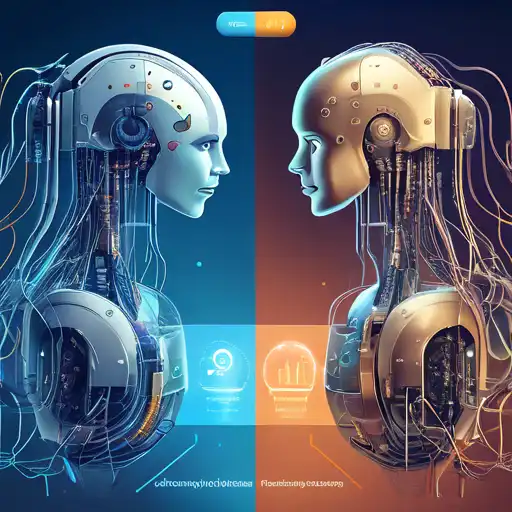Introduction to Machine Learning and Deep Learning
In the realm of artificial intelligence (AI), Machine Learning (ML) and Deep Learning (DL) stand out as two pivotal technologies driving innovation. While they share common ground, their differences are significant and impact their application across various industries. This article delves into the key distinctions between ML and DL, offering insights into their unique capabilities and uses.
What is Machine Learning?
Machine Learning is a subset of AI that enables systems to learn from data, identify patterns, and make decisions with minimal human intervention. ML algorithms improve their performance as they are exposed to more data over time. Common applications include spam detection, recommendation systems, and fraud detection.
What is Deep Learning?
Deep Learning, a more advanced subset of ML, utilizes neural networks with many layers (hence 'deep') to analyze various factors of data. DL excels in handling unstructured data like images and speech, making it ideal for applications such as facial recognition, natural language processing, and autonomous vehicles.
Key Differences Between Machine Learning and Deep Learning
Understanding the differences between ML and DL is crucial for selecting the right approach for your project. Below are some of the core distinctions:
- Data Dependency: DL requires large amounts of data to perform well, whereas ML can work with smaller datasets.
- Hardware Requirements: DL models are computationally intensive, often necessitating high-performance GPUs, unlike ML models that can run on lower-end hardware.
- Feature Extraction: ML relies on manual feature extraction, while DL automates this process, reducing the need for human intervention.
- Interpretability: ML models are generally easier to interpret and explain compared to the complex architectures of DL models.
Choosing Between Machine Learning and Deep Learning
The choice between ML and DL depends on several factors, including the size and nature of your dataset, the computational resources at your disposal, and the specific problem you're aiming to solve. For projects with limited data or resources, ML might be the more practical choice. Conversely, DL shines in scenarios involving complex patterns and large datasets.
Conclusion
Both Machine Learning and Deep Learning offer powerful tools for advancing AI applications. By understanding their key differences, businesses and developers can better leverage these technologies to solve real-world problems. Whether you opt for ML or DL, the potential to transform industries and improve lives is immense.
For more insights into AI technologies, explore our articles on Artificial Intelligence and Data Science.
